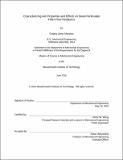| dc.contributor.advisor | Victor W. Wong. | en_US |
| dc.contributor.author | Monahan, Gregory James | en_US |
| dc.contributor.other | Massachusetts Institute of Technology. Department of Mechanical Engineering. | en_US |
| dc.date.accessioned | 2016-09-13T18:09:11Z | |
| dc.date.available | 2016-09-13T18:09:11Z | |
| dc.date.copyright | 2016 | en_US |
| dc.date.issued | 2016 | en_US |
| dc.identifier.uri | http://hdl.handle.net/1721.1/104140 | |
| dc.description | Thesis: S.M., Massachusetts Institute of Technology, Department of Mechanical Engineering, 2016. | en_US |
| dc.description | This electronic version was submitted by the student author. The certified thesis is available in the Institute Archives and Special Collections. | en_US |
| dc.description | Cataloged from student-submitted PDF version of thesis. | en_US |
| dc.description | Includes bibliographical references (pages 98-99). | en_US |
| dc.description.abstract | As a result of increasingly stringent emissions regulations, Diesel Particulate Filters (DPF) have become a widespread method of reducing particulate emissions in both on and off highway diesel engine use. This particular aftertreatment system is chosen for its high filtration efficiency and relative simplicity. The porous ceramic substrate captures the particulate matter which is comprised of combustible soot and inorganic metallic ash. While the soot can be cleared from the filter through high temperature oxidation, the small amount of ash remains in the filter. The presence of these soot and ash particles creates an increase in the flow resistance of the filter which creates more backpressure on the engine and results in a decrease in fuel economy. Over the life of the filter, the ash particles become a significant portion of particulate matter in the filter and the resulting flow resistance. While the effects of ash and soot on filter performance have been extensively studied, the underlying deposition mechanisms and effects of various ash properties are not well understood. The focus of this research is to investigate the effects of ash properties such as packing density and chemistry on the flow resistance of both the ash cake layer and the filter substrate. The results of this and other research can support the optimization of operating conditions, regeneration strategies, and lubricant additive formulations for decreased system backpressure. Additionally, this research seeks to develop and improve advanced diagnostic tools in order to bridge the gap between macro scale quantifiable flow resistance and micro scale deposition characteristics. Using both high resolution X-Ray CT imaging and flow simulation tools, a method is tested by which values for ash and filter permeability can be calculated to investigate local micro scale filter phenomena or various lab and field samples. | en_US |
| dc.description.statementofresponsibility | by Gregory James Monahan. | en_US |
| dc.format.extent | 99 pages | en_US |
| dc.language.iso | eng | en_US |
| dc.publisher | Massachusetts Institute of Technology | en_US |
| dc.rights | M.I.T. theses are protected by copyright. They may be viewed from this source for any purpose, but reproduction or distribution in any format is prohibited without written permission. See provided URL for inquiries about permission. | en_US |
| dc.rights.uri | http://dspace.mit.edu/handle/1721.1/7582 | en_US |
| dc.subject | Mechanical Engineering. | en_US |
| dc.title | Characterizing ash properties and effects on Diesel Particulate Filter flow resistance | en_US |
| dc.title.alternative | DPF flow resistance | en_US |
| dc.type | Thesis | en_US |
| dc.description.degree | S.M. | en_US |
| dc.contributor.department | Massachusetts Institute of Technology. Department of Mechanical Engineering | |
| dc.identifier.oclc | 958162902 | en_US |
